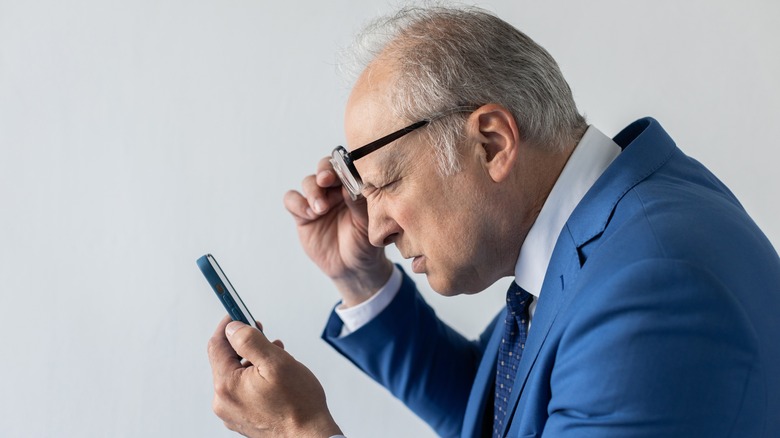Blurry iPhone Home Screen? Here's How To Fix It
As sharp as the display on more recent models of the iPhone may be, it may still run into problems. For example, you might unlock your phone or exit an app to find that your Home Screen wallpaper is blurry, or that the entire screen looks out of focus.
The reasons for such visual problems can vary — everything from a default setting that needs to be changed, to glitches, to an out-of-date OS. The first thing you need to do is figure out why your Home Screen is noticeably fuzzy-looking. One simple explanation is that your iPhone may be focusing on a large widget, which would automatically blur the background when in use, in which case your background should clear up when you tap an empty area of the screen to move off of the widget.
Barring that, ask yourself some basic questions: Has the screen been blurry before and you just didn't notice? Did the blur appear after an update? Is the blur consistent or does it only happen occasionally? What were you doing on your iPhone before you noticed the Home Screen blur?
Once you have at least some of these answers, it's time to start troubleshooting.
If your Home Screen is always blurry
Chances are an always-blurry Home Screen — particularly when it's just the background — is not the byproduct of a glitch or other software conflict. One possibility is that the wallpaper may just be a low resolution, which could make it appear "off" on the iPhone's screen. Though it's more likely that your version of iOS (specifically iOS 16 and up) is blurring the background automatically.
- Unlock your iPhone (using your passcode, TouchID, or FaceID), then swipe down from the top of the Home Screen to go back to the Lock Screen — except now it's not actually locked.
- Tap and hold the screen until it zooms out to show the Lock and Home Screen editor.
- Tap the Customize button below your current screen configuration, then select Home Screen.
- If you believe the background image resolution might be too low, tap the Photo button at the bottom of the screen and try out a different image.
- If image resolution isn't a concern, tap the Blur button in the bottom-right corner — you should immediately see the wallpaper image clear up in the Home Screen preview.
- Tap Done in the top-right corner when finished, then tap on the screen preview to set it.
Though be aware that Apple's decision to automatically blur your Home Screen background does have a purpose. The blurred background is intended to make it easier to see apps and folders, so un-blurring it may create a different visual problem for you.
If your Home Screen isn't usually blurry
A Home Screen that is only blurry some of the time is more likely the result of some kind of bug or deep-rooted setting that needs an adjustment. Try restarting your iPhone to see if that clears things up. If it doesn't, check to see if there's an iOS update by opening Settings and selecting General, then choose Software Update to see if there's a new version to install. If the problem persists:
- Open Settings and select General.
- Scroll down and select Transfer or Reset iPhone.
- Tap Reset, then select Reset Home Screen Layout.
- If a manual Home Screen reset doesn't work, open Settings and select Accessibility.
- Select Display & Text Size, then turn on the Reduce Transparency toggle — this should make your iPhone reduce transparency and blur effects on backgrounds for better legibility.
After trying either (or both) of the steps above, if you're still not having any luck, there are other possibilities.
If your Home Screen is blurry at specific times
Focus Mode is intended to provide more optimal working conditions on your smartphone by setting up a schedule and controlling what apps are usable, which (if any) notifications can get through, and so on. It can also change the look of your Lock Screen, which could make your backgrounds appear different from what you're used to.
- Open Settings and select Focus.
- Select Do Not Disturb, then choose Options.
- Find the toggle for Dim Lock Screen and, if it's turned on, turn it off.
- It's also possible that dimmed screen settings are being shared across multiple devices. To turn this off, open Settings and select Focus.
- Find the Share Across Devices toggle and turn it off to prevent Focus Mode settings from automatically activating across all of your connected devices.
It's possible to simply turn Focus Mode off, of course, but if you rely on it day-to-day it's better to leave it on and switch off screen dimming instead. That way you can still benefit from the features that benefit you without having to deal with unwanted screen adjustments.



